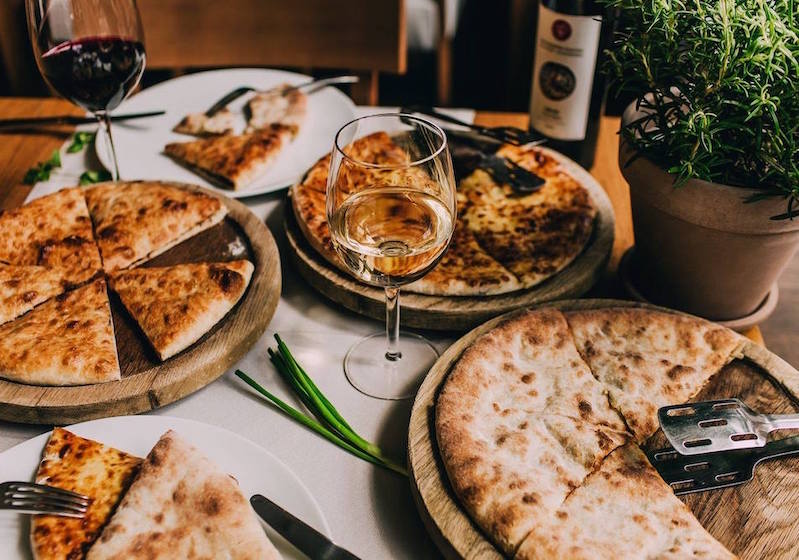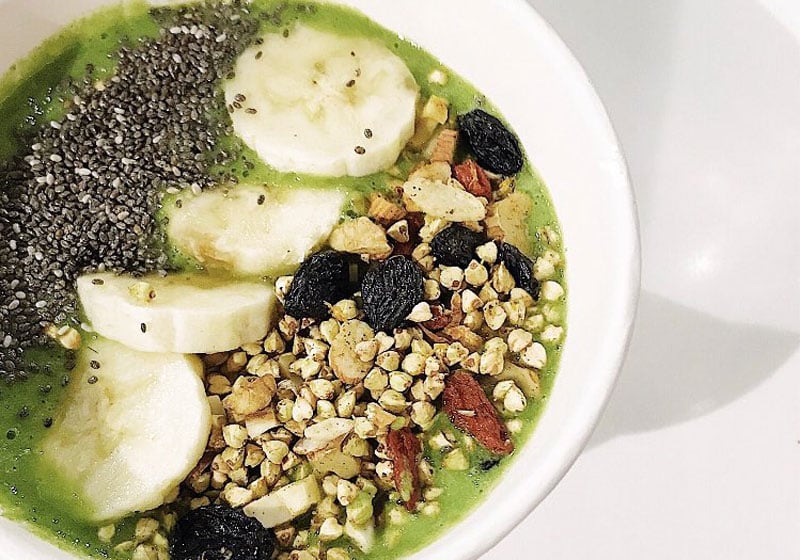Khachapuri wars: can everyone stop calling Georgia’s national dish ‘Armenian pizza’

In this month’s On our radar column, we celebrate one of the New East’s most beloved dishes, and ask whether going viral is a blessing or a curse for little-known cuisines.
Another day, another dose of Twitter-based uproar. Except unlike the Oscars, bagels, or anything that PewDePie has ever said, done, or thought about, this time, we’re facing an issue that is dangerously close to our hearts. We are discussing the fate, heritage, and cultural importance of khachapuri.
For those of you yet to experience khachapuri’s gooey goodness, then it’s probably best described as a cheese-stuffed pastry/bread hybrid. There are several variations — the Imeretian khachapuri is served straight up with sulguni sheep’s cheese; the Adjarian khachapuri is boat-shaped with an egg at its core — but all are strongly associated with Georgia. It is a grave understatement to say that Georgia feels strongly about khachapuri. It is the country’s national dish. UNESCO has decreed that it is in fact part of Georgia’s intangible cultural heritage. It is cooked so regularly that the International School of Economics at Tbilisi State University has devised its own khachapuri index as a measure of inflation.
A classic Adjarian khachapuri, complete with egg. Image: Yanina Bondarenko under a CC licence
Perhaps it’s unsurprising, then, that a handful of upstanding netizens took offence at a new slew of khachapuri-themed food articles appearing in the US press. Not because anyone minds foreigners trying khachapuri for themselves (English-language news outlet Georgian Journal releases a dedicated article each time a famous newspaper, TV channel, or YouTuber experiences its cheesy delight) but most definitely because some journalists miscrediting the must-have snack as Armenian.
This isn’t a case of a few travel bloggers gone rogue. The Vancouver Sun skips over the details in their review of the city’s Armenian food. The LA Times describes khachapuri as “Armenian pizza.” And, most recently, the LAist has attracted social media scorn for a cringe-inducing headline describing the bread as coming from “ancient Armenia”. Most do mention Georgia somewhere in the text, but for most New East watchers (or as I like to call them, nerds), the damage has already been done. Add to this the fact that many of the dishes featured have been modified beyond recognition and it’s no wonder that foodies are distraught.
Is it wrong to make a traditional Georgian dish with American flare when that reflects the meld of cultures you live in your everyday life?
Perhaps a little of this confusion is understandable. There are more Armenian restaurants in the States than Georgian ones. Plenty of them offer khachapuri, which has established itself in Armenia because it is delicious and quite frankly, who doesn’t want to try their neighbour’s favourite food? Many Armenians make the dish themselves. Even if it didn’t originate there, khachapuri does form a part of that country’s food culture. Many of the Armenian cooks interviewed is the US say that they are using recipes passed down from their grandmothers and great-grandmothers. They’re putting a spin on food that feels personal to them. Perhaps it’s no surprise that restranteurs are referring to their food as “Armenian khachapuri”, even if plenty of Georgians would take offense at the terms.
Similarly, many of the changes made to traditional recipes are about dishes being relocated and sampled in new countries. Cultures — including the food we eat — are supposed to morph and transform because they reflect the ever-changing people which make them. Georgians who move to the US will have different life experiences and tastes to those who stay in Europe. So will their children. So why is it surprising if we start to see khachapuri evolve from its original form? Is it wrong to make a traditional Georgian dish with American flare when that reflects the meld of cultures you live in your everyday life? And how do you balance that against the shudder felt by any Georgian when they see Adjarian khachapuri served with chorizo and bagel seasoning:
But badly-researched articles hailing Armenian khachapuris can have an impact beyond confusion and bruised egos. Food can act as a gateway to discovering and exploring a new culture — and generally, it helps if you know what that culture is. Georgian fashion, art, and design are slowly making their mark in the world. Imagine how much faster they could grow if an army of food lovers began researching the country in earnest. When linked back to their roots, Instagram-worthy dishes can provoke real appreciation for a place in the world that you’ve never been, perhaps a place that doesn’t get the chance to shine all that often. If there’s money to be made, it’s only a matter of time until chefs who have never been to Georgia, have no idea how the dish was traditionally made, and don’t care about its origins begin to cash in too. Suddenly, a country’s national dish isn’t actually benefiting that country at all.
If Armenian restaurants are introducing Americans to the cheesy delights of khachapuri, that isn’t something to complain about: it’s something to celebrate. But like anything that doesn’t belong to you, it needs to be treated with care and respect. Sometimes that means Armenian cooks pointing out that their best-selling dish actually came from somewhere else. Sometimes that means journalists doing more than a bare minimum of research. Food evolves and changes because it is still loved; people actively take an interest in it. But sometimes, it pays to take a look back.


